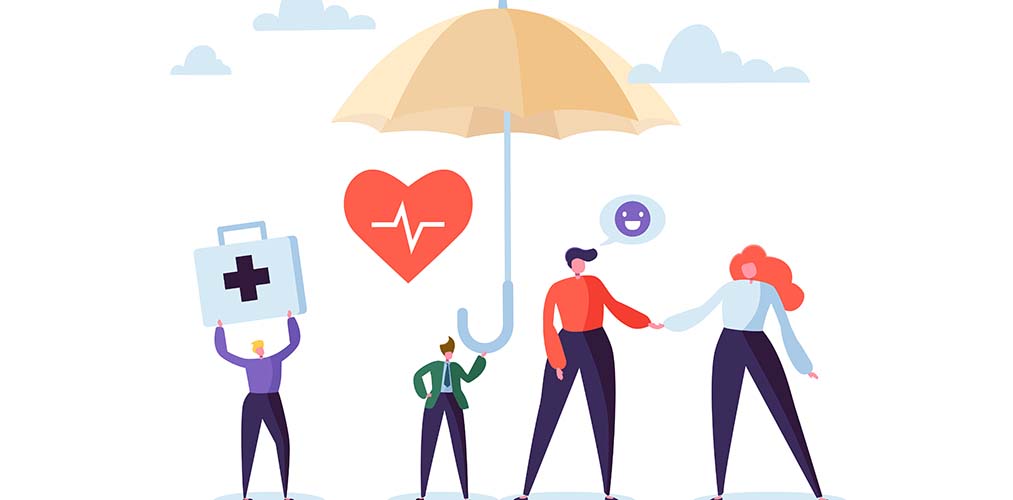20 Sep 2019
Do You Know What to Do in a Medical Emergency…and Do Your Clients?
Read Time: 6 minutes 36 seconds
Medical emergencies rarely happen, and then only to other people, right? Wrong—although some of your clients may think otherwise. Medical emergencies occur with startling frequency (according to CDC data, hospitals report one emergency room visit per year for nearly every two people). They can happen to anyone, anytime.
Yet many people don’t know how to respond to emergency situations. Studies show that most people—family members, bystanders, and victims—don’t react quickly or effectively because of one of three reasons:
- Failure to comprehend the situation’s severity
- Confusion over what to do, and
- Fear of requesting emergency services unnecessarily.
Good news: these hurdles can be overcome. Emergency readiness starts with a little planning, preparation, and common-sense prevention. This may be a great conversation to have with your clients when discussing health insurance. It also makes a relevant email or newsletter topic. Either way, emergency preparedness starts with these four key steps.
Carry That Medical Info Along
Most people already carry their health insurance card with them. But they may want to carry more information than that. This way, if they aren’t in a position to communicate with first responders, the medical team still has access to essential health information that may impact treatment.
The easiest solution: downloading an ICE (In Case of Emergency) app to one’s smartphone. These apps store the user’s doctor(s), medications, allergies, blood type and emergency contacts. Best of all, first responders are trained to search for them, and they’re visible from a device’s Lock screen.
Learn How to Respond to Specific Emergencies
What do you do if someone stops breathing? Starts choking? Is bleeding profusely? For those who are hazy on the specifics—and most non-medical laypeople are—it’s worth dedicating a few hours for first aid and CPR training. Classes are often offered through hospitals, community colleges, and not-for-profits for minimal fees.
The most useful classes are those that offer hands-on training (the more times we physically do something, the more second nature it becomes), but online classes are available. It pays to brush up on the Heimlich maneuver, too.
Keep First Aid Kits Handy
First aid kits aren’t just something to keep at home—there’s good reason to keep one in the car and at work as well.
What’s the most valuable item in a first aid kit? It’s not the bandages or antiseptics (although these are very useful). It’s the first aid manual or card that accompanies the kit. Should one’s mind go blank—which can happen under stress—those step-by-step instructions can literally save lives. Or download the American Red Cross’s reference card here.
Know the Local Emergency Phone Numbers
It’s important that every member of a family old enough to use a phone knows how to call first responders for help. Emergency phone numbers vary by country, so when traveling, tourists should be sure to research those numbers and add them to their smartphone contact list. Be mindful that, in some areas, police, fire, and ambulance services each have a distinct phone number.
Often, people hesitate because they’re not sure it’s a true emergency. Experts advise to place the call. First responders would much rather be called to a false alarm—it happens all the time—than miss an opportunity to save a life.

Focus on Preventing Medical Emergencies
While it’s important to know how to respond to medical emergencies, it’s even better to prevent them in the first place. Many of us tend to procrastinate when it comes to preventive care, but these three basic measures can make a difference—more good information to share with your clients.
Take Advantage of Wellness Care
Behind on some routine doctor visits or screenings? Don’t delay—pick up the phone and get those appointments scheduled. Often, “silent” diseases such as high blood pressure, high cholesterol, diabetes and some forms of cancer are discovered as a result of routine screenings. Once up-to-date, stay that way by making future appointments well in advance.
Take Baby Steps toward a Healthier Lifestyle
Modest lifestyle changes can add up to significant health improvements. One approach is to assign small monthly challenges: build a daily walking habit, start working out regularly. When there is a need to lose weight or stop smoking, the best response is to address the problem head-on. Research support programs, and choose the one that seems most helpful. Everyone should be mindful: we only get one body and one life.
Practice Good Financial Wellness, Too
Without question, quality health insurance can help us maintain good health and keep chronic medical conditions in check. As you know, PALIG health plans typically include generous wellness benefits and coverage for routine screenings, so there’s no reason not to stay current on physicals and preventive tests.
And when it comes to a medical crisis, health insurance can make all the difference. PALIG health plans, of course, generally include emergency room benefits and coverage for ambulance services and hospitalization. Since emergency services can be shockingly expensive, knowing these services are covered allows patients and families to focus on getting the best care instead of worrying how to pay for it.
Yes, medical emergencies are an unfortunate fact of life. But with a little planning, preparation and prevention, your clients can be ready to face them head on—while reducing their risk of needing to do so. And you can help them get there.
Remember; always consult with your physician or other qualified health care professional to determine the best options for your body and health and to answer any questions you may have regarding any medical matter.


